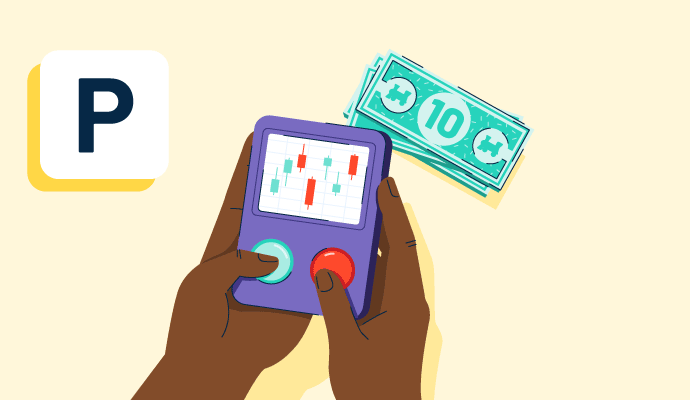
Paper trading is the method of practicing trading in a virtual environment without investing money literally in the stock market. Concrete trading will take place in a simulated environment where real-time financial data (values and price moments of stocks) will be pulled to create a virtual reality that will not affect the stock market.
The term “paper trade” came forth when, in a period where there was no electronic trading, the trading strategies, ideas, and actions were practiced on paper manually. This allowed traders to compare their actions and strategies with the actual stock movements to check accuracy and efficiency after every trading session.
Now, paper trading is conducted over trading platforms that use predictive analytics and risk management solutions to simulate investment and deal scenarios using data aggregation from different places.
In actuality, there are no different types of paper trading. The terms simulated or virtual trading refer to the same concept. However, different platforms, tools, and methods are used in paper trading, which differentiates each one from another. Some of the popular ones are:
In addition to these methods of paper trading, there are various other kinds differentiated based on the tools used. These include electronic paper trading, such as online trading simulators and mobile app simulators, that can be standalone, brokerage-based, or game-like stock market simulators and manual paper trading.
Paper trading frames real-time trading and situations to create potential strategies and transactions and calculate risks to eliminate future losses. Its benefits include:
Even though the benefits surpass the loopholes of paper trading, these risks should not be ignored. The limitations and drawbacks associated with paper trading are:
The process of paper trading involves the simulation of live trading exercises in a virtual environment like buying and selling financial instruments using virtual money. Therefore, the process of paper trading should include the following elements:
Virtual trading is another term used for paper trading, which refers to trading stocks, forex, or futures without risking real money.
Demo trading refers to an often interchangeable and related topic of paper trading where platform access is provided to a user to practice trading, transactions, and strategies to get used to the software before the trader commits to investing real money in platform subscriptions or licenses as well as in trading.
On the other hand, live trading involves actual risk, real money, and potential returns. It is a process of trading in the stock market in real time. Therefore, to succeed in live trading, sound judgment, market knowledge, and strong emotional balance are required as traders exhibit differential behavior in comparison to paper trading.
Learn about the types, trends, and importance of asset classes.
Samarth is an Associate Market Research Analyst at G2. He is a result-oriented professional with combined experience in business research analysis and innovation consulting in the fintech and CPG industry. He has worked as a Litigation Lawyer in the High Court of Karnataka with a focus in arbitration, real estate, and constitutional matters. In his free time, Samarth enjoys playing basketball, reading thriller & self-help novels, playing video games, and watching anime. He is also a foodie and a travel enthusiast.
What are trading platforms? Trading platforms are technology solutions that allow investors...
 by Patrick Szakiel
by Patrick Szakiel
The market may be unpredictable, but with the right crypto trading strategies, you can...
 by Washija Kazim
by Washija Kazim
Cryptocurrency trading lets you buy and sell digital currencies.
 by Sagar Joshi
by Sagar Joshi
What are trading platforms? Trading platforms are technology solutions that allow investors...
 by Patrick Szakiel
by Patrick Szakiel
The market may be unpredictable, but with the right crypto trading strategies, you can...
 by Washija Kazim
by Washija Kazim


